PrivAttNet: Predicting Privacy Risks in Images Using Visual Attention
Chen Zhang,
Thivya Kandappu,
Vigneshwaran Subbaraju
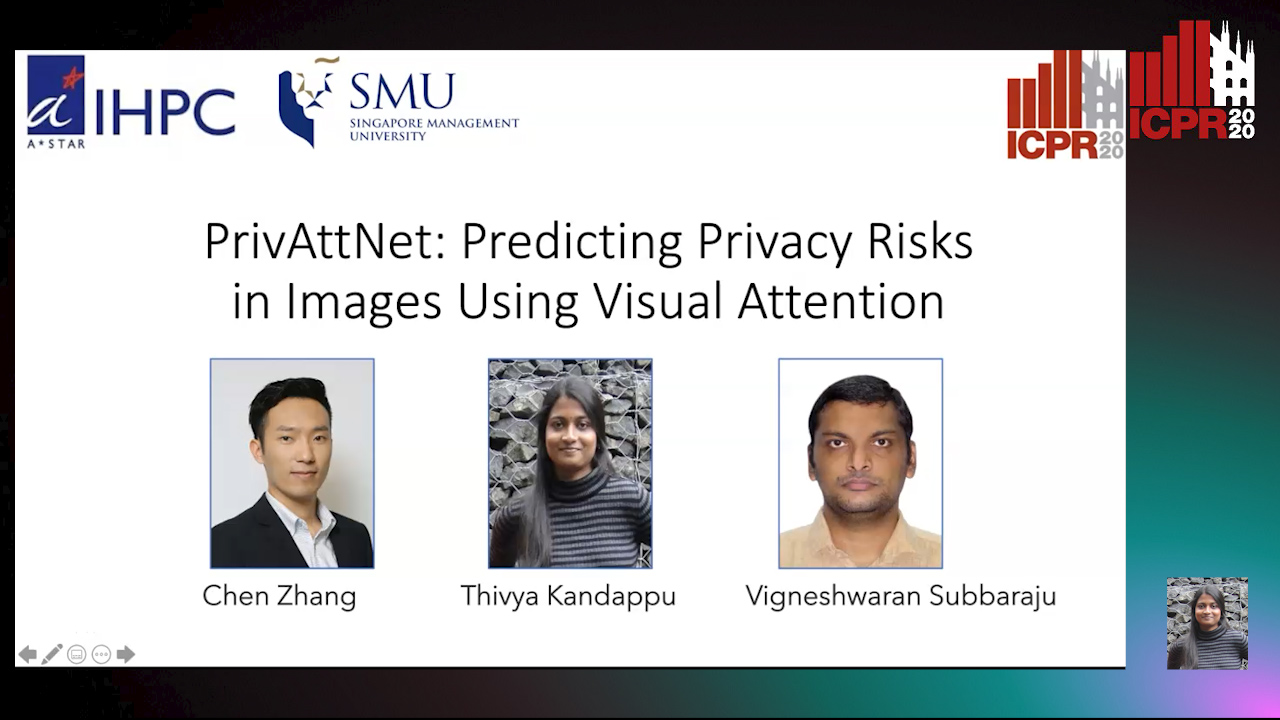
Auto-TLDR; PrivAttNet: A Visual Attention Based Approach for Privacy Sensitivity in Images
Similar papers
Privacy Attributes-Aware Message Passing Neural Network for Visual Privacy Attributes Classification
Hanbin Hong, Wentao Bao, Yuan Hong, Yu Kong
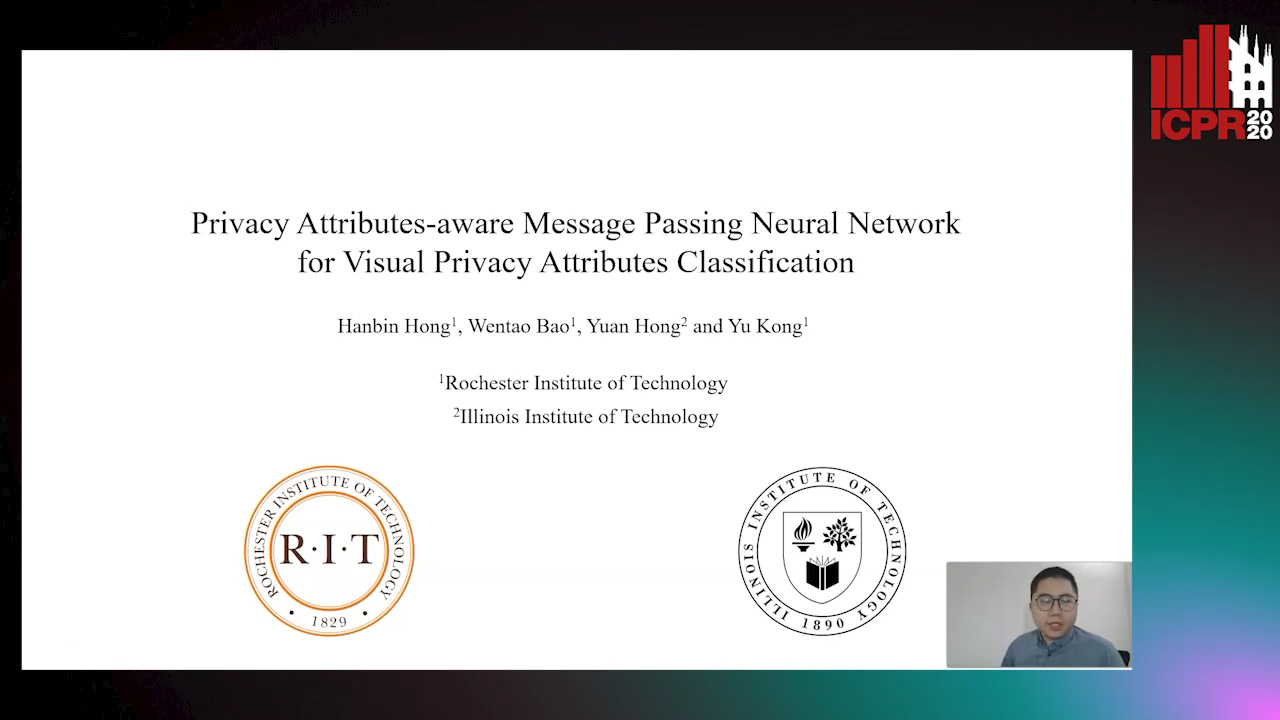
Auto-TLDR; Privacy Attributes-Aware Message Passing Neural Network for Visual Privacy Attribute Classification
Abstract Slides Poster Similar
MAGNet: Multi-Region Attention-Assisted Grounding of Natural Language Queries at Phrase Level
Amar Shrestha, Krittaphat Pugdeethosapol, Haowen Fang, Qinru Qiu

Auto-TLDR; MAGNet: A Multi-Region Attention-Aware Grounding Network for Free-form Textual Queries
Abstract Slides Poster Similar
Question-Agnostic Attention for Visual Question Answering
Moshiur R Farazi, Salman Hameed Khan, Nick Barnes
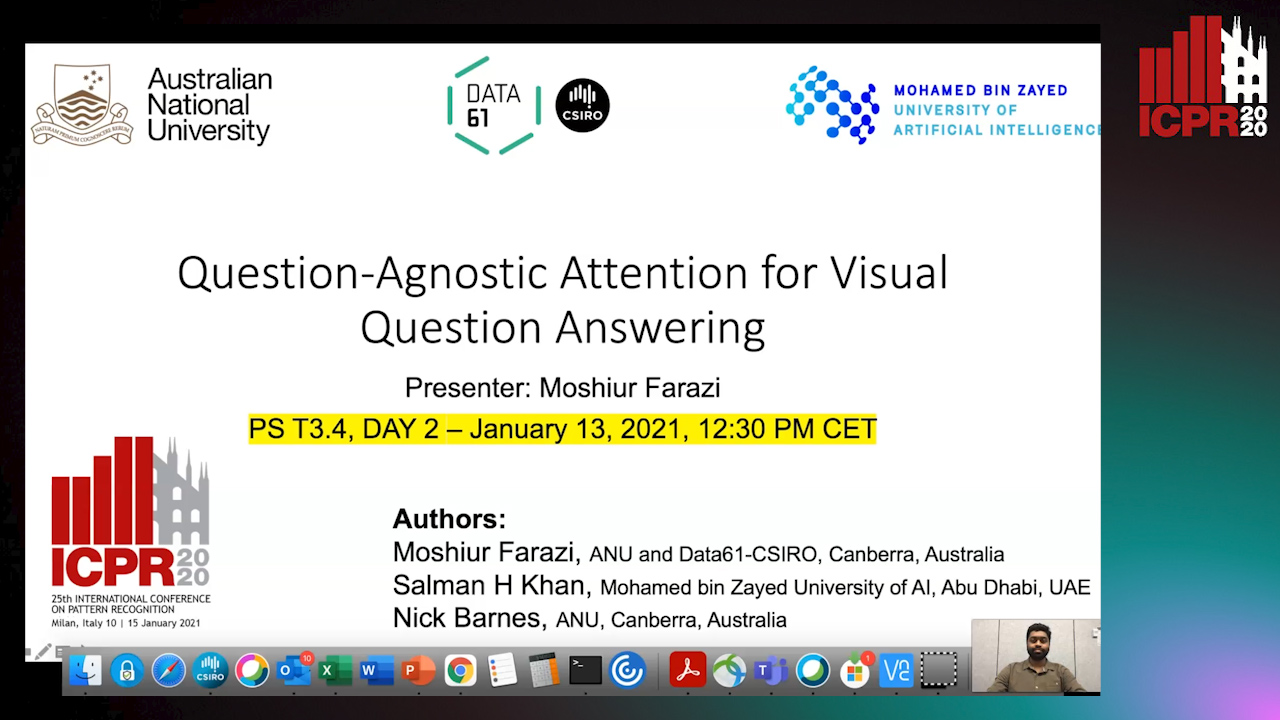
Auto-TLDR; Question-Agnostic Attention for Visual Question Answering
Abstract Slides Poster Similar
Two-Level Attention-Based Fusion Learning for RGB-D Face Recognition
Hardik Uppal, Alireza Sepas-Moghaddam, Michael Greenspan, Ali Etemad

Auto-TLDR; Fused RGB-D Facial Recognition using Attention-Aware Feature Fusion
Abstract Slides Poster Similar
Multi-Label Contrastive Focal Loss for Pedestrian Attribute Recognition
Xiaoqiang Zheng, Zhenxia Yu, Lin Chen, Fan Zhu, Shilong Wang

Auto-TLDR; Multi-label Contrastive Focal Loss for Pedestrian Attribute Recognition
Abstract Slides Poster Similar
Multi-Stage Attention Based Visual Question Answering
Aakansha Mishra, Ashish Anand, Prithwijit Guha

Auto-TLDR; Alternative Bi-directional Attention for Visual Question Answering
Classifying Eye-Tracking Data Using Saliency Maps
Shafin Rahman, Sejuti Rahman, Omar Shahid, Md. Tahmeed Abdullah, Jubair Ahmed Sourov

Auto-TLDR; Saliency-based Feature Extraction for Automatic Classification of Eye-tracking Data
Abstract Slides Poster Similar
Attentive Visual Semantic Specialized Network for Video Captioning
Jesus Perez-Martin, Benjamin Bustos, Jorge Pérez

Auto-TLDR; Adaptive Visual Semantic Specialized Network for Video Captioning
Abstract Slides Poster Similar
SAT-Net: Self-Attention and Temporal Fusion for Facial Action Unit Detection
Zhihua Li, Zheng Zhang, Lijun Yin

Auto-TLDR; Temporal Fusion and Self-Attention Network for Facial Action Unit Detection
Abstract Slides Poster Similar
Detective: An Attentive Recurrent Model for Sparse Object Detection
Amine Kechaou, Manuel Martinez, Monica Haurilet, Rainer Stiefelhagen

Auto-TLDR; Detective: An attentive object detector that identifies objects in images in a sequential manner
Abstract Slides Poster Similar
A CNN-RNN Framework for Image Annotation from Visual Cues and Social Network Metadata
Tobia Tesan, Pasquale Coscia, Lamberto Ballan

Auto-TLDR; Context-Based Image Annotation with Multiple Semantic Embeddings and Recurrent Neural Networks
Abstract Slides Poster Similar
Coarse to Fine: Progressive and Multi-Task Learning for Salient Object Detection
Dong-Goo Kang, Sangwoo Park, Joonki Paik

Auto-TLDR; Progressive and mutl-task learning scheme for salient object detection
Abstract Slides Poster Similar
More Correlations Better Performance: Fully Associative Networks for Multi-Label Image Classification

Auto-TLDR; Fully Associative Network for Fully Exploiting Correlation Information in Multi-Label Classification
Abstract Slides Poster Similar
Global Feature Aggregation for Accident Anticipation
Mishal Fatima, Umar Karim Khan, Chong Min Kyung
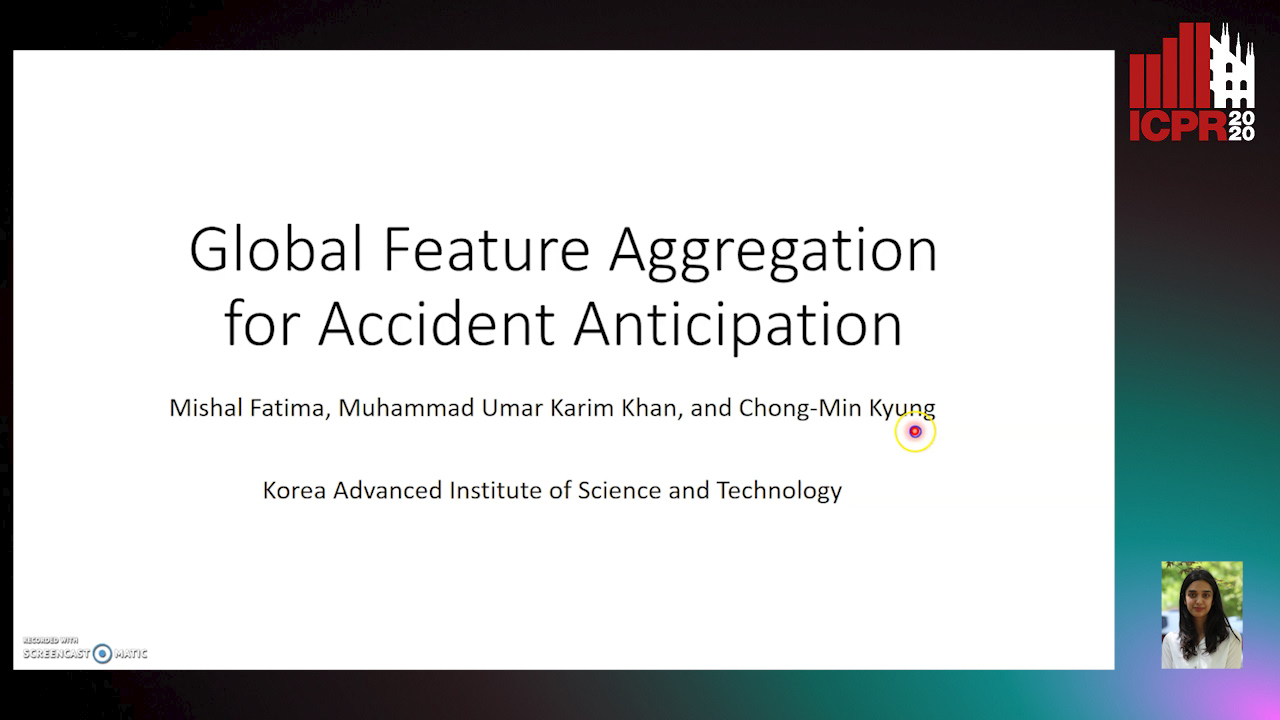
Auto-TLDR; Feature Aggregation for Predicting Accidents in Video Sequences
Multi-Attribute Learning with Highly Imbalanced Data
Lady Viviana Beltran Beltran, Mickaël Coustaty, Nicholas Journet, Juan C. Caicedo, Antoine Doucet

Auto-TLDR; Data Imbalance in Multi-Attribute Deep Learning Models: Adaptation to face each one of the problems derived from imbalance
Abstract Slides Poster Similar
Integrating Historical States and Co-Attention Mechanism for Visual Dialog
Tianling Jiang, Yi Ji, Chunping Liu

Auto-TLDR; Integrating Historical States and Co-attention for Visual Dialog
Abstract Slides Poster Similar
FastSal: A Computationally Efficient Network for Visual Saliency Prediction

Auto-TLDR; MobileNetV2: A Convolutional Neural Network for Saliency Prediction
Abstract Slides Poster Similar
Relatable Clothing: Detecting Visual Relationships between People and Clothing
Thomas Truong, Svetlana Yanushkevich
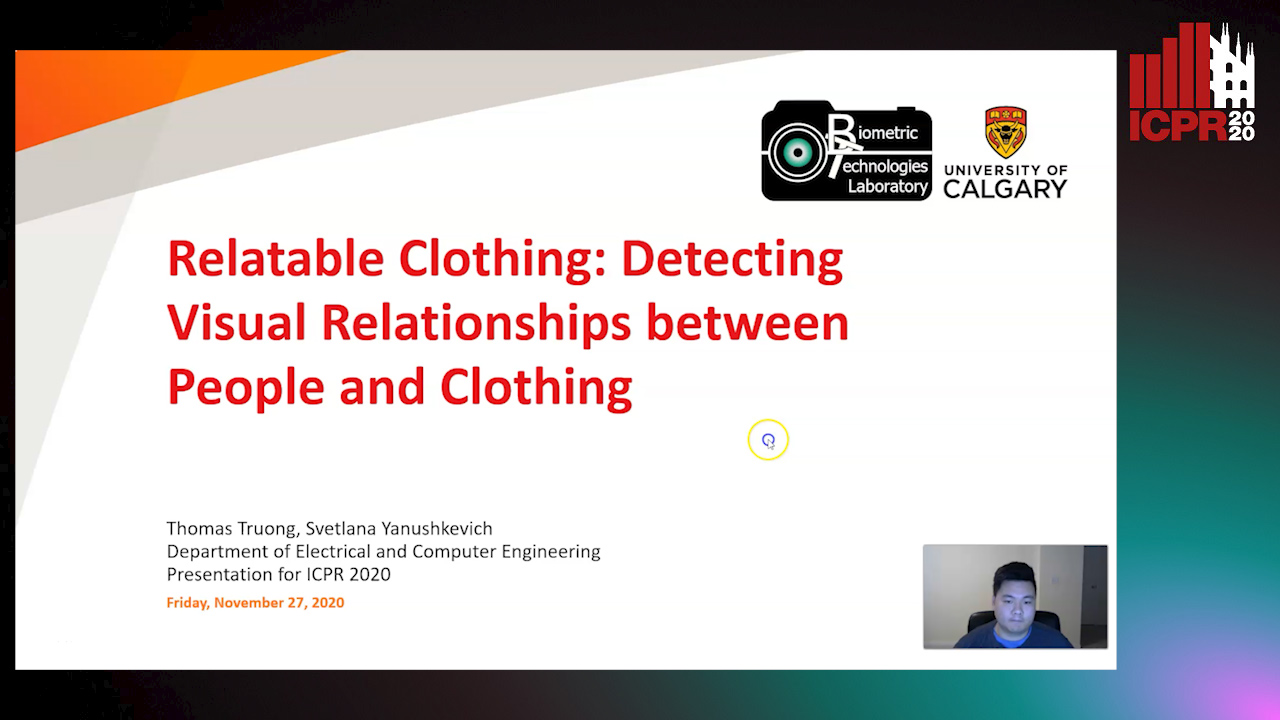
Auto-TLDR; Relatable Clothing Dataset for ``worn'' and ``unworn'' Classification
Abstract Slides Poster Similar
Utilising Visual Attention Cues for Vehicle Detection and Tracking
Feiyan Hu, Venkatesh Gurram Munirathnam, Noel E O'Connor, Alan Smeaton, Suzanne Little

Auto-TLDR; Visual Attention for Object Detection and Tracking in Driver-Assistance Systems
Abstract Slides Poster Similar
Multi-Scale Relational Reasoning with Regional Attention for Visual Question Answering

Auto-TLDR; Question-Guided Relational Reasoning for Visual Question Answering
Abstract Slides Poster Similar
Trajectory-User Link with Attention Recurrent Networks
Tao Sun, Yongjun Xu, Fei Wang, Lin Wu, 塘文 钱, Zezhi Shao

Auto-TLDR; TULAR: Trajectory-User Link with Attention Recurrent Neural Networks
Abstract Slides Poster Similar
CardioGAN: An Attention-Based Generative Adversarial Network for Generation of Electrocardiograms
Subhrajyoti Dasgupta, Sudip Das, Ujjwal Bhattacharya

Auto-TLDR; CardioGAN: Generative Adversarial Network for Synthetic Electrocardiogram Signals
Abstract Slides Poster Similar
Learning Natural Thresholds for Image Ranking
Somayeh Keshavarz, Quang Nhat Tran, Richard Souvenir

Auto-TLDR; Image Representation Learning and Label Discretization for Natural Image Ranking
Abstract Slides Poster Similar
Recurrent Deep Attention Network for Person Re-Identification
Changhao Wang, Jun Zhou, Xianfei Duan, Guanwen Zhang, Wei Zhou

Auto-TLDR; Recurrent Deep Attention Network for Person Re-identification
Abstract Slides Poster Similar
Enhanced User Interest and Expertise Modeling for Expert Recommendation
Tongze He, Caili Guo, Yunfei Chu

Auto-TLDR; A Unified Framework for Expert Recommendation in Community Question Answering
Abstract Slides Poster Similar
From Early Biological Models to CNNs: Do They Look Where Humans Look?
Marinella Iole Cadoni, Andrea Lagorio, Enrico Grosso, Jia Huei Tan, Chee Seng Chan
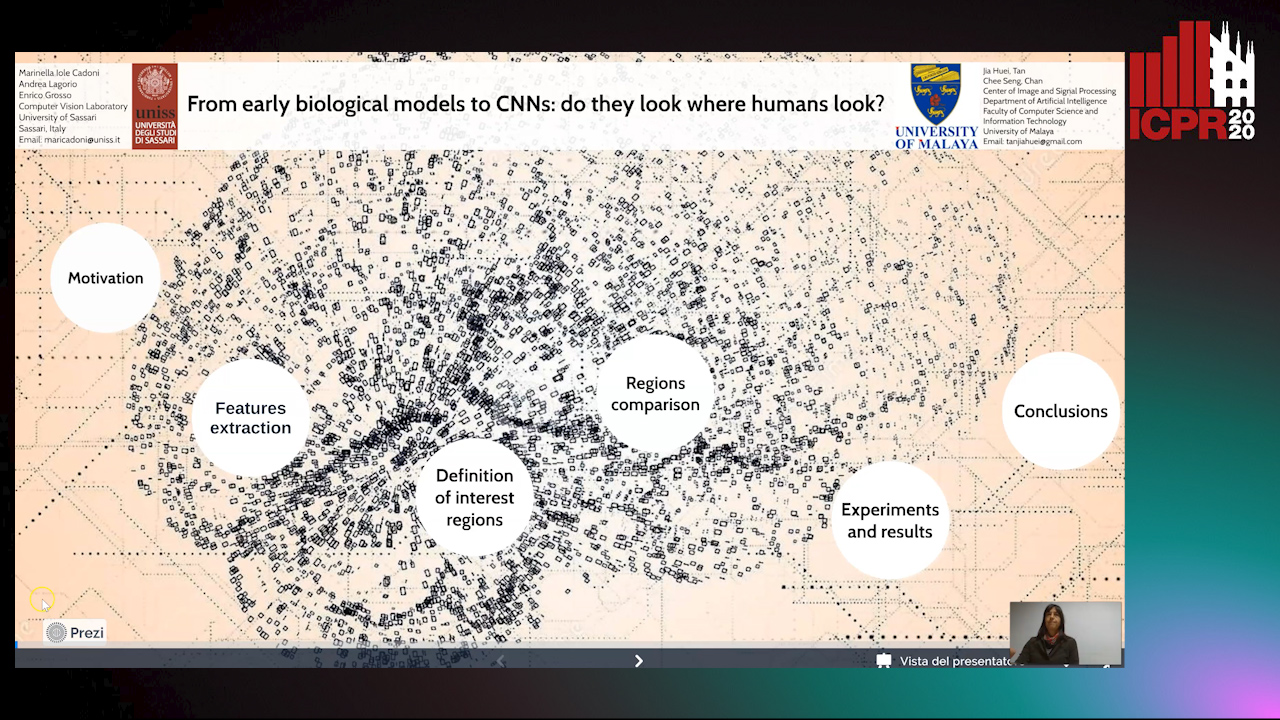
Auto-TLDR; Comparing Neural Networks to Human Fixations for Semantic Learning
Abstract Slides Poster Similar
How Important Are Faces for Person Re-Identification?
Julia Dietlmeier, Joseph Antony, Kevin Mcguinness, Noel E O'Connor

Auto-TLDR; Anonymization of Person Re-identification Datasets with Face Detection and Blurring
Abstract Slides Poster Similar
Learning Disentangled Representations for Identity Preserving Surveillance Face Camouflage
Jingzhi Li, Lutong Han, Hua Zhang, Xiaoguang Han, Jingguo Ge, Xiaochu Cao

Auto-TLDR; Individual Face Privacy under Surveillance Scenario with Multi-task Loss Function
Video Face Manipulation Detection through Ensemble of CNNs
Nicolo Bonettini, Edoardo Daniele Cannas, Sara Mandelli, Luca Bondi, Paolo Bestagini, Stefano Tubaro

Auto-TLDR; Face Manipulation Detection in Video Sequences Using Convolutional Neural Networks
Context Visual Information-Based Deliberation Network for Video Captioning
Min Lu, Xueyong Li, Caihua Liu

Auto-TLDR; Context visual information-based deliberation network for video captioning
Abstract Slides Poster Similar
Learning Emotional Blinded Face Representations
Alejandro Peña Almansa, Julian Fierrez, Agata Lapedriza, Aythami Morales

Auto-TLDR; Blind Face Representations for Emotion Recognition
Abstract Slides Poster Similar
Attentive Hybrid Feature Based a Two-Step Fusion for Facial Expression Recognition
Jun Weng, Yang Yang, Zichang Tan, Zhen Lei

Auto-TLDR; Attentive Hybrid Architecture for Facial Expression Recognition
Abstract Slides Poster Similar
Dual Path Multi-Modal High-Order Features for Textual Content Based Visual Question Answering
Yanan Li, Yuetan Lin, Hongrui Zhao, Donghui Wang

Auto-TLDR; TextVQA: An End-to-End Visual Question Answering Model for Text-Based VQA
AG-GAN: An Attentive Group-Aware GAN for Pedestrian Trajectory Prediction
Yue Song, Niccolò Bisagno, Syed Zohaib Hassan, Nicola Conci

Auto-TLDR; An attentive group-aware GAN for motion prediction in crowded scenarios
Abstract Slides Poster Similar
Global Context-Based Network with Transformer for Image2latex
Nuo Pang, Chun Yang, Xiaobin Zhu, Jixuan Li, Xu-Cheng Yin

Auto-TLDR; Image2latex with Global Context block and Transformer
Abstract Slides Poster Similar
Collaborative Human Machine Attention Module for Character Recognition
Chetan Ralekar, Tapan Gandhi, Santanu Chaudhury

Auto-TLDR; A Collaborative Human-Machine Attention Module for Deep Neural Networks
Abstract Slides Poster Similar
Assessing the Severity of Health States Based on Social Media Posts
Shweta Yadav, Joy Prakash Sain, Amit Sheth, Asif Ekbal, Sriparna Saha, Pushpak Bhattacharyya

Auto-TLDR; A Multiview Learning Framework for Assessment of Health State in Online Health Communities
Abstract Slides Poster Similar
Exploring Spatial-Temporal Representations for fNIRS-based Intimacy Detection via an Attention-enhanced Cascade Convolutional Recurrent Neural Network
Chao Li, Qian Zhang, Ziping Zhao

Auto-TLDR; Intimate Relationship Prediction by Attention-enhanced Cascade Convolutional Recurrent Neural Network Using Functional Near-Infrared Spectroscopy
Abstract Slides Poster Similar
Context for Object Detection Via Lightweight Global and Mid-Level Representations
Mesut Erhan Unal, Adriana Kovashka

Auto-TLDR; Context-Based Object Detection with Semantic Similarity
Abstract Slides Poster Similar
Information Graphic Summarization Using a Collection of Multimodal Deep Neural Networks
Edward Kim, Connor Onweller, Kathleen F. Mccoy

Auto-TLDR; A multimodal deep learning framework that can generate summarization text supporting the main idea of an information graphic for presentation to blind or visually impaired
Deep Gait Relative Attribute Using a Signed Quadratic Contrastive Loss
Yuta Hayashi, Shehata Allam, Yasushi Makihara, Daigo Muramatsu, Yasushi Yagi

Auto-TLDR; Signal-Contrastive Loss for Gait Attributes Estimation
Picture-To-Amount (PITA): Predicting Relative Ingredient Amounts from Food Images
Jiatong Li, Fangda Han, Ricardo Guerrero, Vladimir Pavlovic
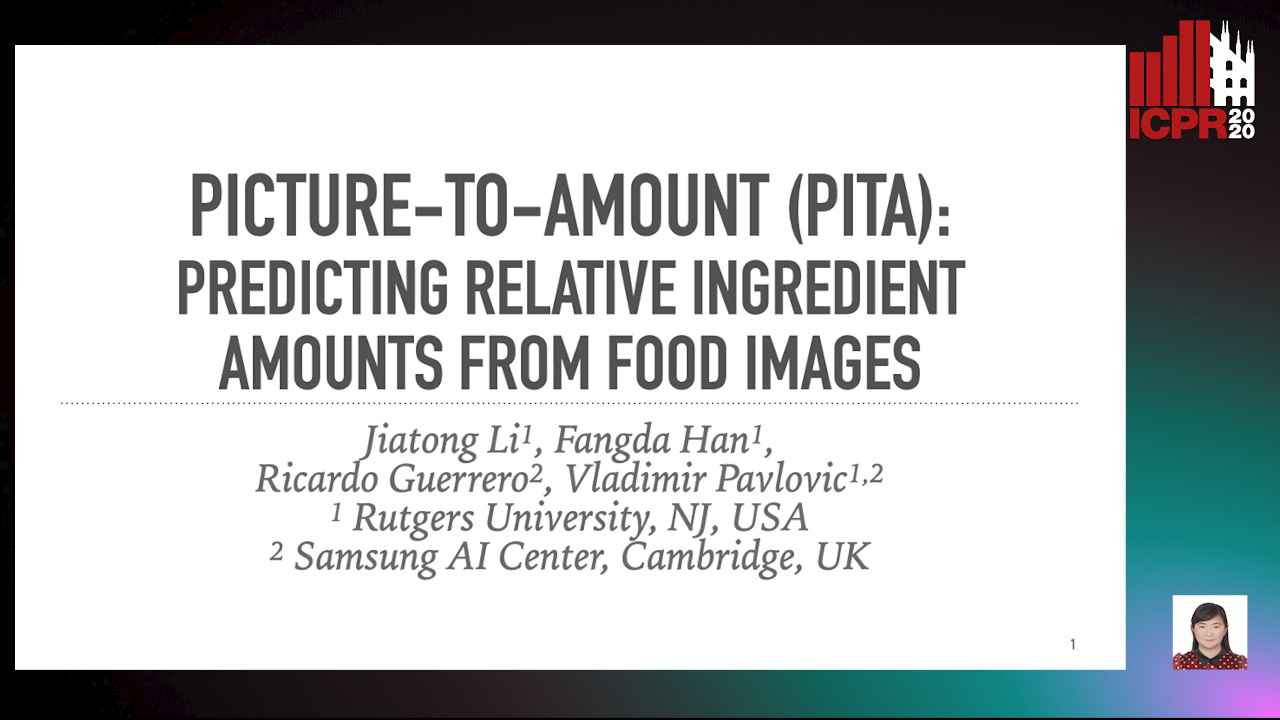
Auto-TLDR; PITA: A Deep Learning Architecture for Predicting the Relative Amount of Ingredients from Food Images
Abstract Slides Poster Similar
What and How? Jointly Forecasting Human Action and Pose
Yanjun Zhu, Yanxia Zhang, Qiong Liu, Andreas Girgensohn

Auto-TLDR; Forecasting Human Actions and Motion Trajectories with Joint Action Classification and Pose Regression
Abstract Slides Poster Similar
Adaptive L2 Regularization in Person Re-Identification
Xingyang Ni, Liang Fang, Heikki Juhani Huttunen

Auto-TLDR; AdaptiveReID: Adaptive L2 Regularization for Person Re-identification
Abstract Slides Poster Similar
Early Wildfire Smoke Detection in Videos
Taanya Gupta, Hengyue Liu, Bir Bhanu

Auto-TLDR; Semi-supervised Spatio-Temporal Video Object Segmentation for Automatic Detection of Smoke in Videos during Forest Fire
The Color Out of Space: Learning Self-Supervised Representations for Earth Observation Imagery
Stefano Vincenzi, Angelo Porrello, Pietro Buzzega, Marco Cipriano, Pietro Fronte, Roberto Cuccu, Carla Ippoliti, Annamaria Conte, Simone Calderara

Auto-TLDR; Satellite Image Representation Learning for Remote Sensing
Abstract Slides Poster Similar
StrongPose: Bottom-up and Strong Keypoint Heat Map Based Pose Estimation

Auto-TLDR; StrongPose: A bottom-up box-free approach for human pose estimation and action recognition
Abstract Slides Poster Similar
Self-Supervised Joint Encoding of Motion and Appearance for First Person Action Recognition
Mirco Planamente, Andrea Bottino, Barbara Caputo

Auto-TLDR; A Single Stream Architecture for Egocentric Action Recognition from the First-Person Point of View
Abstract Slides Poster Similar